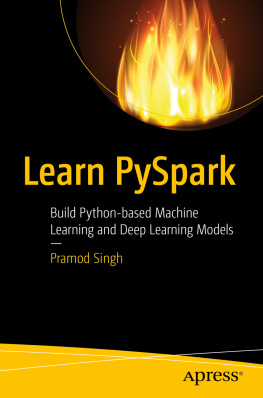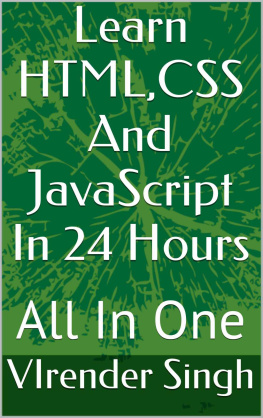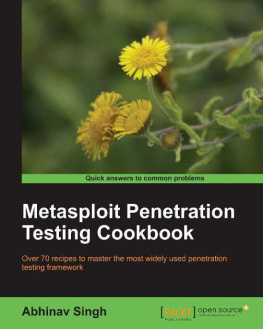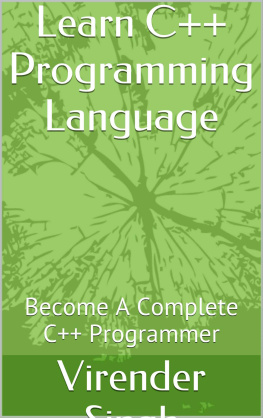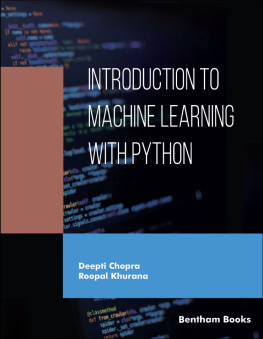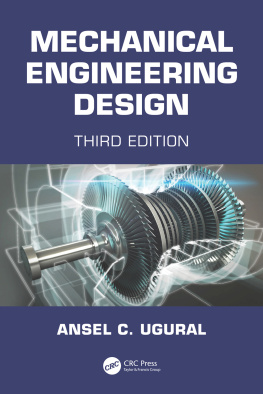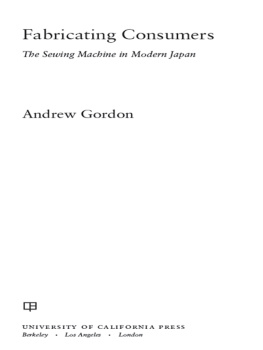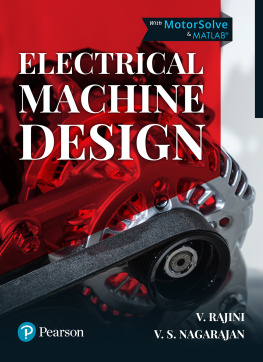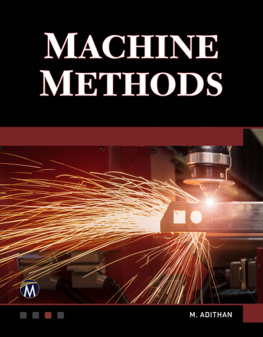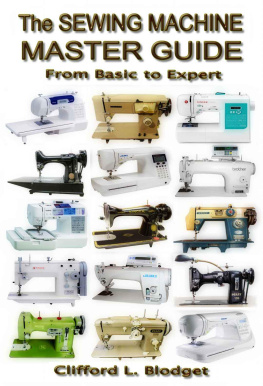Singh - Ambiguity machines--an examination
Here you can read online Singh - Ambiguity machines--an examination full text of the book (entire story) in english for free. Download pdf and epub, get meaning, cover and reviews about this ebook. City: New York, year: 2015, publisher: Tom Doherty Associates;Tor Books, genre: Detective and thriller. Description of the work, (preface) as well as reviews are available. Best literature library LitArk.com created for fans of good reading and offers a wide selection of genres:
Romance novel
Science fiction
Adventure
Detective
Science
History
Home and family
Prose
Art
Politics
Computer
Non-fiction
Religion
Business
Children
Humor
Choose a favorite category and find really read worthwhile books. Enjoy immersion in the world of imagination, feel the emotions of the characters or learn something new for yourself, make an fascinating discovery.

- Book:Ambiguity machines--an examination
- Author:
- Publisher:Tom Doherty Associates;Tor Books
- Genre:
- Year:2015
- City:New York
- Rating:3 / 5
- Favourites:Add to favourites
- Your mark:
- 60
- 1
- 2
- 3
- 4
- 5
Ambiguity machines--an examination: summary, description and annotation
We offer to read an annotation, description, summary or preface (depends on what the author of the book "Ambiguity machines--an examination" wrote himself). If you haven't found the necessary information about the book — write in the comments, we will try to find it.
Singh: author's other books
Who wrote Ambiguity machines--an examination? Find out the surname, the name of the author of the book and a list of all author's works by series.
Ambiguity machines--an examination — read online for free the complete book (whole text) full work
Below is the text of the book, divided by pages. System saving the place of the last page read, allows you to conveniently read the book "Ambiguity machines--an examination" online for free, without having to search again every time where you left off. Put a bookmark, and you can go to the page where you finished reading at any time.
Font size:
Interval:
Bookmark:
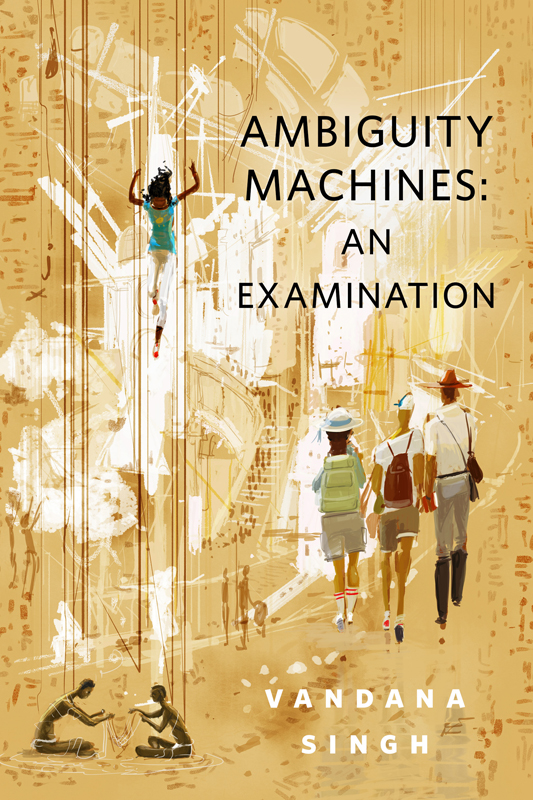

The author and publisher have provided this e-book to you without Digital Rights Management software (DRM) applied so that you can enjoy reading it on your personal devices. This e-book is for your personal use only. You may not print or post this e-book, or make this e-book publicly available in any way. You may not copy, reproduce, or upload this e-book, other than to read it on one of your personal devices.
Copyright infringement is against the law. If you believe the copy of this e-book you are reading infringes on the authors copyright, please notify the publisher at: us.macmillanusa.com/piracy.
Contents
Intrepid explorers venturing into Conceptual Machine-Space, which is the abstract space of all possible machines, will find in the terrain some gaps, holes, and tears. These represent the negative space where impossible machines reside, the ones that cannot exist because they violate known laws of reality. And yet such impossible machines are crucial to the topographical maps of Conceptual Machine-Space, and indeed to its topology. They therefore must be investigated and classified.
It is thus that the Ministry of Abstract Engineering has sent the topographers of Conceptual Machine-Space to various destinations so that they may collect reports, rumors, folktales, and intimations of machines that do not and cannot exist. Of these we excerpt below three accounts of the subcategory of Ambiguity Machines: those that blur or dissolve boundaries.
The candidate taking the exam for the position of Junior Navigator in the uncharted negative seas of Conceptual Machine-Space will read the three accounts below and follow the instructions thereafter.
The First Account
All machines grant wishes, but some grant more than we bargain for. One such device was conceived by a Mongolian engineer who spent the best years of his youth as a prisoner in a stone building in the Altai Mountains. The purpose of this machine was to conjure up the face of his beloved.
His captors were weaponheads of some sort; he didnt know whether they were affiliated with any known political group or simply run by sociopath technophiles with an eye on the weapons market. They would let him out of his cell into a makeshift laboratory every day. Their hope was that he would construct for them a certain weapon, the plans for which had been found on his desk, and had led to his arrest. The engineer had a poetic sensibility, and the weapon described in his papers was metaphoric. But how can you explain metaphors to a man with a gun?
When the engineer was a young boy, stillness had fascinated him. He had been used to wandering with his family across the Gobi, and so he had made a study of stillness. In those days everything movedthe family with the ger, the camels and sheep, the milk sloshing in the pail as he helped his mother carry it, the stars in the circle of open sky in the roof above his head, the dust storms, dark shapes in shawls of wind, silhouetted against blue sky. The camels would fold themselves up into shaggy mounds between the bushes, closing their eyes and nostrils, waiting for the storm to pass. His grandfather would pull him into the ger, the door creaking shut, the window in the roof lashed closed, and he would think about the animals and the ger, their shared immobility in the face of the coming storm. Inside it would be dark, the roar of the dust storm muffled, and in the glow of the lamp his older sisters voice would rise in song. Her voice and the circle of safety around him tethered him to this world. Sometimes he would bury his face in a camels shaggy flank as he combed its side with his fingers, breathing in the rich animal smell, hearing with his whole body the camels deep rumble of pleasure.
In such moments he would think of his whole life played out against the rugged canvas of the Gobi, an arc as serene as the motion of the stars across the night, and he would feel again that deep contentment. In his childhood he had thought there were only two worlds, the inside of the ger and the outside. But the first time he rode with his father to a town, he saw to his utmost wonder that there was another kind of world, where houses were anchored to the earth and people rode machines instead of animals, but they never went very far. They had gadgets and devices that seemed far more sophisticated than his familys one TV, and they carried with them a subtle and unconscious air of privilege. He had no idea then that years later he would leave the Gobi and his family to live like this himself, an engineering student at a university in Ulaanbaatar, or that the streets of that once-unimaginable city would become as familiar to him as the pathways his family had traversed in the desert. The great coal and copper mines had, by then, transformed the land he thought would never change, and the familiarity was gone, as was his family, three generations scattered or dead.
Being tethered to one place, he discovered, was not the same as the stillness he had once sought and held through all the wanderings of his childhood. In the midst of all this turmoil he had found her , daughter of a family his had once traded with, studying to be a teacher. She was as familiar with the old Mongolia as he had been, and was critical and picky about both old and new. She had a temper, liked to laugh, and wanted to run a village school and raise goats. With her, the feeling of having a center in the world came back to him.
So he thought of her in his incarceration, terrified that through this long separation he would forget her face, her voice. As the faces of his captors acquired more reality with each passing week or month or year, his life beforehand seemed to lose its solidity, and his memories of her seemed blurred, as though he was recollecting a dream. If he had been an artist he would have drawn a picture of her, but being an engineer, he turned to the lab. The laboratory was a confusion of discarded electronics: pieces of machinery bought from online auctions, piles of antiquated vacuum tubes, tangles of wires and other variegated junk. With these limited resources the engineer tried his best, always having to improvise and work around the absence of this part and that one. His intent was to make a pseudo-weapon that would fool his captors into releasing him, but he didnt know much about weapons, and he knew that the attempt was doomed to failure. But it would be worth it to recreate his beloveds face again, if only a machine-rendered copy of the real thing.
So into his design he put the smoothness of her cheek, and the light-flash of her intelligence, and the fiercely tender gaze of her eyes. He put in the swirl of her hair in the wind, and the way her anger would sometimes dissolve into laughter, and sometimes into tears. He worked at it, refining, improving, delaying as much as he dared.
And one day he could delay no more, for his captors gave him an ultimatum: The machine must be completed by the next day, and demonstrated to their leaders. Else he would pay with his life. He had become used to their threats and their roughness, and asked only that he be left alone to put the machine in its final form.
Alone in the laboratory, he began to assemble the machine. But soon he found that there was something essential missing. Rummaging about in the pile of debris that represented laboratory supplies, he found a piece of stone tile, one half of a square, broken along the diagonal. It was inlaid with a pattern of great beauty and delicacy, picked out in black and cream on the gray background. An idea for the complex circuit he had been struggling to configure suddenly came together in his mind. Setting aside the tile, he returned to work. At last the machine was done, and tomorrow he would die.
Font size:
Interval:
Bookmark:
Similar books «Ambiguity machines--an examination»
Look at similar books to Ambiguity machines--an examination. We have selected literature similar in name and meaning in the hope of providing readers with more options to find new, interesting, not yet read works.
Discussion, reviews of the book Ambiguity machines--an examination and just readers' own opinions. Leave your comments, write what you think about the work, its meaning or the main characters. Specify what exactly you liked and what you didn't like, and why you think so.

